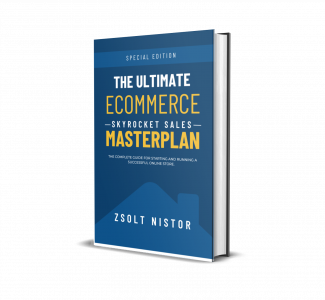Let’s dive into digital marketing tips for small businesses
The world of marketing has undergone a significant transformation in the past decade, and the rise of digital marketing has played a significant role in this change. As a small business owner, you need to stay on top of the latest marketing trends to remain competitive in today’s fast-paced digital world.
Digital marketing refers to any marketing efforts that use electronic devices or the internet to promote products or services. It encompasses a broad range of tactics such as search engine optimization (SEO), social media marketing, content marketing, email marketing, and more.
Small businesses can benefit significantly from digital marketing as it enables them to reach a wider audience, improve their online presence, and connect with potential customers in a more personalized way.
In this article, we’ll provide seven essential digital marketing tips for small businesses to help them increase their online visibility, reach their target audience, and ultimately grow their business.
Whether you’re just starting or looking to improve your existing digital marketing strategy, these tips will be valuable in helping you achieve your goals. So, let’s dive in and explore the world of digital marketing!
Define Your Target Audience
Before diving into any digital marketing strategy, it’s essential to identify your target audience. Knowing your audience helps you create content that resonates with them and deliver it through the channels they use most.
To define your target audience, start by identifying their demographics. This includes characteristics such as age, gender, location, income level, education level, and more. Understanding these demographics will help you create targeted marketing campaigns that speak directly to your audience.
For example, if you run a beauty salon, your target audience might be women between the ages of 18 and 45 who live in your city and have a certain income level. Once you know these demographics, you can create marketing campaigns that appeal directly to this group.
You can also adjust your messaging, images, and branding to better appeal to this specific audience.
Next, determine your audience’s behavior patterns. This includes their habits, interests, hobbies, and the way they interact with your brand. For instance, you might find that your target audience is highly engaged on social media platforms like Instagram, or they prefer to shop online instead of in-person.
Knowing these behavior patterns allows you to tailor your marketing strategy to the channels and formats that your audience prefers. For example, if you discover that your target audience loves video content, you might prioritize creating video content for social media platforms like YouTube or TikTok.
Overall, identifying your target audience’s demographics and behavior patterns is crucial to creating a digital marketing strategy that resonates with them. By understanding who your audience is and how they engage with your brand, you can create targeted and effective marketing campaigns that drive results.
 Create a website
Create a website
Choose a Domain Name
Choosing a domain name is the first step in creating a website. It’s the online address of your site and should be easy to remember and recognizable. Choose a domain name that is relevant to your business and is available for registration.
For example, if you have a business that sells natural skincare products, you might choose a domain name like “naturalskincare.com” or “organicskincare.net”. It’s important to choose a domain name that is easy to remember and recognizable to your customers.
Develop User-Friendly Design
The design of your website is just as important as its content. It should be easy to navigate and provide a pleasant user experience. Choose an attractive color scheme and a simple and clean design.
Make sure your website is optimized for mobile devices, as more and more people are accessing the internet from their smartphones and tablets. This will make your website more accessible and increase the chances of users returning to your site.
For example, if you have an online clothing store, your website should be organized into clear categories, with high-quality photographs of your products. Make sure your website is easy to navigate and that the add-to-cart buttons are visible and easy to access.
Overall, creating a website is essential for any business looking to have an online presence. Choosing a relevant domain name and developing a user-friendly design will help increase the visibility of your website and improve the user experience.
Content Marketing
Blogging
Blogging is a powerful tool for small businesses looking to increase their online visibility and establish themselves as thought leaders in their industry. By creating informative and valuable blog posts, you can attract and engage your target audience, driving traffic to your website and improving your search engine rankings.
For example, if you run a business that sells organic skincare products, you might create blog posts that educate your audience about the benefits of using organic products, share DIY skincare recipes, or discuss the latest trends in the skincare industry.
Guest Blogging
Guest blogging involves writing blog posts for other websites that share your target audience. By guest blogging, you can reach a wider audience and establish yourself as an expert in your industry. It also helps you build relationships with other bloggers and potentially earn backlinks to your own website, which can boost your search engine rankings.
For example, if you run a business that provides financial planning services, you might write a guest blog post for a popular personal finance blog. In this post, you could share your expertise on a specific topic, such as retirement planning or saving for college.
Social Media Marketing
Determine the Right Social Media Platform
Social media marketing involves using social media platforms like Facebook, Twitter, and Instagram to promote your products or services. To get the most out of your social media marketing efforts, it’s essential to determine the right platforms for your business.
This means identifying where your target audience spends their time online and focusing your efforts on those platforms.
For example, if you run a business that provides wedding planning services, you might focus your social media efforts on platforms like Instagram and Pinterest, which are popular among brides-to-be.
Post Consistently
Consistency is key when it comes to social media marketing. By posting regularly, you can keep your audience engaged and increase your visibility on social media platforms. To stay consistent, create a content calendar and plan out your posts in advance. This will help you stay organized and ensure that you’re posting high-quality content on a regular basis.
For example, if you run a business that sells handmade jewelry, you might create a content calendar that includes product photos, behind-the-scenes peeks at your creative process, and customer testimonials.
Email Marketing
Build a List of Subscribers
Email marketing involves sending promotional emails to your subscribers to keep them engaged with your brand and promote your products or services. To get started with email marketing, you need to build a list of subscribers. This can be done by offering incentives like discounts or freebies in exchange for signing up for your email list.
For example, if you run a business that sells organic baby products, you might offer a discount code to customers who sign up for your email list. This can encourage them to subscribe and give you permission to send them promotional emails.
Send Regular Newsletters
Once you have a list of subscribers, it’s essential to send regular newsletters to keep them engaged and informed about your products or services. Your newsletters should be informative and valuable, providing your subscribers with content that they can’t find anywhere else.
For example, if you run a business that sells eco-friendly cleaning products, you might send a monthly newsletter that includes tips for green cleaning, product updates, and customer testimonials.
 Search Engine Optimization (SEO)
Search Engine Optimization (SEO)
Keyword Research
Keyword research is an essential aspect of SEO. It involves identifying the search terms and phrases that your target audience is using to find products or services like yours. By optimizing your website content around these keywords, you can improve your search engine rankings and drive more organic traffic to your website.
To conduct keyword research, start by brainstorming a list of potential keywords related to your business. Use keyword research tools like Google Keyword Planner, SEMrush, or Ahrefs to identify the search volume and competition level for each keyword.
For example, if you run a business that provides fitness classes, your keyword research might identify search terms like “yoga classes near me,” “Pilates classes for beginners,” or “HIIT workouts for weight loss.”
Once you have identified the keywords you want to target, incorporate them into your website content. This includes your website copy, blog posts, product descriptions, and metadata.
Optimize Website Content
Optimizing your website content is an essential part of SEO. Your website content should be informative, valuable, and relevant to your target audience. By creating high-quality content, you can improve your search engine rankings and attract more organic traffic to your website.
To optimize your website content, start by incorporating your target keywords into your website copy, blog posts, and product descriptions. However, make sure not to overdo it, as keyword stuffing can hurt your search engine rankings.
In addition to incorporating keywords, make sure that your website content is well-organized and easy to navigate. Use headings and subheadings to break up large blocks of text and make it easier for users to scan your content.
For example, if you run a business that sells organic skincare products, your website content might include blog posts about the benefits of using organic products, product descriptions that highlight the natural ingredients in your products, and informative guides about skincare routines.
By implementing these SEO strategies, you can improve your website’s visibility on search engines, attract more organic traffic, and ultimately grow your business. However, keep in mind that SEO is an ongoing process, and it takes time to see results.
Consistently create high-quality content, conduct regular keyword research, and optimize your website content to stay ahead of the competition.
In Conclusion
Digital marketing is an essential tool for small businesses looking to increase their online visibility, attract more customers, and grow their business. By implementing the strategies outlined in this article, you can create a powerful digital marketing strategy that helps you connect with your target audience and achieve your business goals.
From identifying your target audience and creating valuable content to leveraging social media and optimizing your website for search engines, there are many different tactics you can use to improve your digital marketing efforts. However, keep in mind that digital marketing is an ongoing process, and it takes time and effort to see results.
So, stay committed to your digital marketing strategy, regularly evaluate your results, and adjust your tactics as needed. With persistence and dedication, you can achieve your digital marketing goals and take your small business to the next level.
FAQs
Q: What is digital marketing?
A: Digital marketing refers to any marketing efforts that use electronic devices or the internet to promote products or services. It includes tactics such as search engine optimization (SEO), social media marketing, content marketing, email marketing, and more.
Q: Why is digital marketing important for small businesses?
A: Digital marketing enables small businesses to reach a wider audience, improve their online presence, and connect with potential customers in a more personalized way. It’s an essential tool for small businesses looking to increase their visibility and compete in today’s fast-paced digital world.
Q: How do I identify my target audience?
A: To identify your target audience, start by identifying their demographics, such as age, gender, location, income level, and education level. Then, determine their behavior patterns, such as the websites they visit, the social media platforms they use, and the products they purchase.
Q: What is SEO?
A: SEO (search engine optimization) is the practice of optimizing your website and its content to improve your search engine rankings and attract more organic traffic to your website.
Q: How often should I post on social media?
A: Consistency is key when it comes to social media marketing. Aim to post at least once a day on your chosen social media platforms, but don’t sacrifice quality for quantity. It’s better to post high-quality content less frequently than to post mediocre content every day.
Q: How can I build an email list?
A: To build an email list, offer incentives like discounts or freebies in exchange for signing up for your email list. You can also use lead magnets, such as free e-books or webinars, to encourage people to subscribe to your email list. Finally, make sure to include opt-in forms on your website and social media platforms to make it easy for people to subscribe.
<p>
Growth Hacking for Web Designers

Ultimate eCommerce Masterplan

Effective Web Design Guildelines


